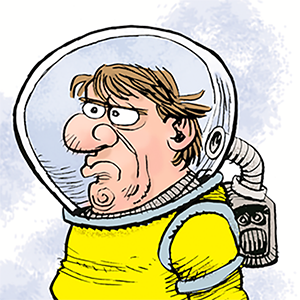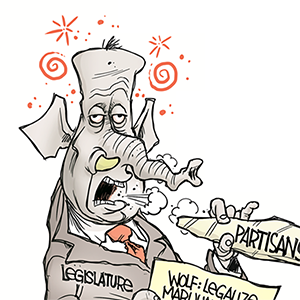Big Sur: Reopening date for Highway 1 announced after massive landslide
Published in News & Features
A massive landslide that has blocked California's Highway 1 through Big Sur for the past 19 months — the longest the roadway has been closed in its history — should finally be cleared and the famed route reopened by March according to Caltrans.
The Regent’s Slide, which is located about 45 miles south of Carmel and 2 miles north of Lucia in Monterey County, occurred Feb. 9, 2024 during heavy winter storms. It has blocked motorists from driving the full length of the spectacular, scenic two-lane road from Monterey to San Simeon ever since.
“We are doing everything in our power to return this vital section of roadway to residents, businesses and travelers who have demonstrated patience and understanding during the repair effort,” Caltrans District 5 Director Scott Eades said in a statement. “Our work is dedicated to them, and this Regent’s Slide reopening estimate allows people to plan ahead and prepare for when Highway 1 is fully reopen once again.”
Rockslides and mudslides occur fairly regularly in Big Sur, where the Santa Lucia mountain range rises steeply from the Pacific Ocean, and a precarious state highway known as one of America’s most breathtaking drives has provided access since the 1930s. Most slides are cleared and fixed within a few days or weeks.
But the Regent’s Slide has proven historically difficult.
An atmospheric river storm in early February 2024 slammed into the coast of Central California and Southern California, dumping more than 10 inches of rain in parts of Big Sur with with winds up to 90 mph. The rain saturated soils, causing trees to collapse, sparking power outages and sending landslides into Highway 1 in multiple places.
The other slides were cleared. The northern part of Big Sur with attractions such as the Nepenthe Restaurant and Pfeiffer Big Sur State Park is accessible now to motorists coming from the north. But the Regents Slide, about 27 miles north of the Monterey-San Luis Obispo county line, blocked access to attractions like Hearst Castle for motorists coming from the north, and shut off most Big Sur access to motorists coming from Southern California without an hours-long detour through the Salinas Valley.
In a typical year, more than 5 million people visit Big Sur, one of the state’s iconic tourist attractions.
The Regent’s Slide originated 450 feet above the roadway.
What made it particularly calamitous is that there already was a slide nearby to the south, Paul’s Slide, which closed Highway 1 in January 2023 and was so big it wasn’t cleared until May 2024.
As a result, the one-two punch has blocked full access along the coast since January 15, 2023.
The closure has frustrated hotels, restaurants, and other businesses.
Tourism leaders have worked to get the message out that Big Sur is open, even if motorists can’t drive the full length of Highway 1.
“The vast majority of Highway 1 remains open and accessible, and travelers can have the full Big Sur experience whether driving in from the north or exploring the coastline of San Luis Obispo County from the south,” said Caroline Beteta, CEO of Visit California, a non-profit tourism promotion group.
“No matter how they approach it, road trippers can take in the route’s awe-inspiring views, explore its charming seaside towns and make countless unexpected discoveries along the way.”
So far, crews working for Caltrans have removed 300,000 cubic yards of rock, dirt, and other debris from the sheer cliff face at Regent’s Slide — about 30,000 dump trucks full — with another 250,000 cubic yards remaining until completion.
But the there have been times when the material continued to slide, as much as 1 foot a day, said Kevin Drabinski, a Caltrans spokesman.
About 80 workers with bulldozers, ground sensors, drones, explosives, and other tools have had to carefully move away tons of rock and dirt, pushing it down the side of the cliffs onto the beach below.
At times, to reduce the risk of a catastrophic accident, they have used unmanned, remote-controlled bulldozers and excavators.
In May, the workers, from Papich Construction, a San Luis Obispo County contractor, began driving 60-foot steel bars called “shear dowels” deep into the ground to try to stabilize the site, which is surrounded by ancient landslides and other problematic geology.
So far they have installed roughly 3,500 such dowels. The dowels are drilled into the slope and grouted in place in 10-foot by 10-foot patterns. The approach has stopped other slide activity and allowed the project to continue.
The work isn’t cheap. It cost $60 million to repair the roadway and remove the debris from Paul’s Slide. And removing Regent’s Slide is estimated to cost $82 million, Drabinski said.
Highway 1 through Big Sur has been closed more than 60 times due to slides and other disasters since it first opened in 1937. At times, some people say it should be abandoned, with nature allowed to take it back.
“It’s disingenuous to just say let’s abandon the highway,” Drabinski said. “You are telling the residents you will no longer be able to get to your home or go to work or school. Big Sur locals sometimes enjoy less volume of traffic. It gives it a more relaxed atmosphere. But I don’t think anyone is seriously considering abandoning the highway,” he said.
And Highway 1 remains an international draw, luring visitors from all over the United States and the world.
“People choose Highway 1 because of the beauty of the drive,” he said. “It is like having a favorite pair of blue jeans. If you get a tear in the knee you don’t throw them away.”
©2025 MediaNews Group, Inc. Visit at mercurynews.com. Distributed by Tribune Content Agency, LLC.







Comments